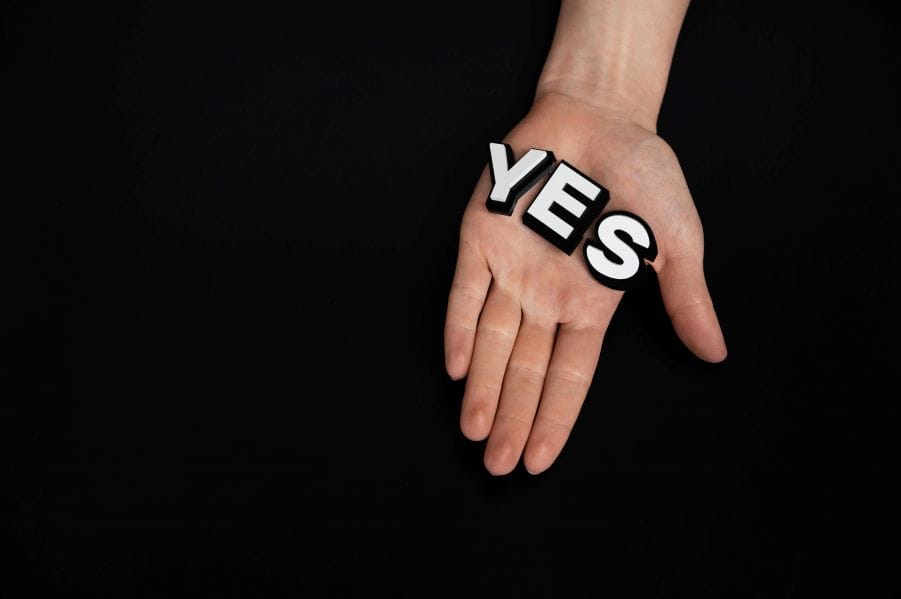How to use Social Media without it Driving you Crazy
Reading time: 10 minutes 26 seconds
*Trigger warning: The following article contains incidents of violence that may be upsetting to some readers.
On Friday, July 13, 2018, in Bidar, Karnataka, India, 32-year-old Mohammad Azam, was joined by Salham Eidal Kubbasi, who was visiting him from Qatar, and three of their friends on a journey home from seeing one of Mohammad’s relatives. Originally from Hyderabad, he had some time off from where he worked as a techie at Accenture.
The drive home was long and so they decided to make a brief stop for a picnic. They happened to pull over near a school in the village. It was afternoon and the schoolchildren were making their way home. Salham, a policeman from Qatar, started distributing chocolates he was carrying to the students who walked past.
Some of the locals noticed this and began to gather nearby. Who were these strangers ‘luring’ kids to them with chocolate? The crowd started to form and the locals began shouting at them. With a rising tide of panic, the five friends scrambled back into their car, the engine roaring to life as they sped away from the growing hostility. The locals took their phones out and took videos and photos of the men in the cherry red SUV as they drove away.
At the next village, Murki, a tree lay blocking the road. The car veered off and ended up on a riverbed. Within seconds, an angry mob surrounded them. Terrified for their lives, Mohammad and his friends pleaded their innocence.
Thirty or so villagers descended on them and ripped them from the car. They beat the five men senseless with sticks and stones. Police officers soon heard of the commotion and arrived at the scene but they could do little and suffered injuries themselves. When the mob finished, four of the men were bruised and battered with sustained critical injuries. Mohammad Azam was dead.
It turned out that there was a rumor spreading via WhatsApp that there were child predators around and the previous village had jumped to the conclusion that these men were suspicious enough. They then shared video footage of the men on WhatsApp and it created a storm of anger.
Fabricated rumors became a fatal night that ended Mohammad’s life far too soon.
UNDERSTANDING SOCIAL MEDIA’S PSYCHOLOGICAL GRIP
This tragic incident is a stark example of how social media’s rapid spread of information can have dire consequences. But how does this connect to our everyday social media use, and how can we prevent such outcomes? How can an entire village become blinded by rage and commit such an act?
To understand this, we need to look at where the power of social media crosses with human nature. Social media magnifies everything. Truth. Lies. Anger. Hate. WhatsApp messages spread from person to person and before you know it, it becomes impossible to find the initial text that started the ball rolling. An idea, no matter how wrong, gets legs and influences minds.
A few weeks ago, in a past edition of Inner Propaganda, I talked about how to stay sane in a crazy world. While social media was part of that world, I want to discuss how we need to think differently about social media, specifically, moving forward.
The ability that such technology has to manipulate us is far beyond anything the world has ever seen. Computers now know us better than we know ourselves. They can predict what we want to buy, watch, and do. As a result, technology has a never-seen-before ability to manipulate our emotions, attitudes, and behavior.
How does this work?
In a nutshell, social media companies leverage incredible amounts of data along with an extensive knowledge of behavioral science to command and direct our attention.
A documentary, “The Social Dilemma” explored how attention is the currency that social media is trading in. Their job is to capture your attention with their content. Once they have your attention, they can direct your behavior. They can advertise products and services. They can influence your choices. They can dictate to you what they want.
This only works because of how our brains work. Our evolution has primed us to respond to various triggers. Our ability to do this kept us alive for thousands of years. Understanding these triggers is much easier when we imagine what it was like to be back in the hunter-gatherer days of our evolution.
THE HUNTER-GATHERER BRAIN
Imagine yourself as a hunter-gatherer. Your job is either to hunt or to keep. Either way, the priority for your brain is that it needs to pay attention to danger. You need to be able to see anything that might threaten you or steal from you.
It is essential to remember anything you got wrong or anything that surprised or shocked you so that it doesn’t do so the next time.
Two critical emotions are necessary for your survival: fear and anger. You need to be driven by fear to hide or run. It’s also vital to stand up for yourself and attack when necessary, which is where anger comes in.
You also need to form strong bonds with your tribe. You need to manage your status in such a group so that you and your family are safe and secure. You must be able to recognize friends or foes when you meet them out in the wilderness and know who to trust.
Finally, gossip is an extremely important behavior that enables you to learn about other people so you can more effectively navigate the social circle you find yourself in.
Let’s take these one by one.
Danger
What is dangerous is, by definition, bad. As a result, we developed a ‘negativity bias’. Nowadays, media corporations leverage this insight by making sure they let us know what negative events are happening. The news is overwhelmingly negative.
Dangerous events are also dramatic. They are a big deal. Our brains are wired to pay attention to negative events that are dramatic because those events are the very things that can cause us problems. Social media spreads content that highlights what is dangerous to us. Often this is presented as ‘who’ is dangerous to us.
Shock/Surprise
Our brains are prediction machines. Their goal is to predict what is going to happen next so that they can manage our bodies effectively and take the right actions. When something surprises or shocks us, this jolts our system and it makes us much more likely to learn from that event. We remember that which surprises us. Hooks, headlines, and clickbait are all ways to jolt us into paying attention to what’s going on in social media.
Fear and Anger
As a result of the news shedding light on everything dangerous that we have to concern ourselves with, the news triggers two types of responses from us. We either are scared so we consume more information or we are angry so we consume more content and engage with it. Fear and anger are more likely to lead to you taking action and continue paying attention so they are perfect for social media to trigger.
Tribal Skills
Many thousands of years later, we are still highly concerned with our status. To position ourselves as effectively as possible, we are constantly caught in a trap where we feel the need to present a version of ourselves to the world. We need to stand for something and stand against something else.
Social media effectively polarizes each issue so that you are exposed to primarily content that supports your perspective. This cultivates a tribal feeling around topics and issues such that you very quickly prioritize the question, ‘Which side are you on? As a result of this, you learn to demonize the other side and see those who agree with you as trustworthy. It effectively builds tribes.
Gossip
Since ‘gossip’ represents a significant amount of the content spread in social media, we also use it to understand what is going on with others and who is worth supporting and going against. It is not only issues that lead to tribal polarization, it is also people.
THE POWER OF DATA
All of these aspects of human evolution are targeted by social media in a very effective way. They have mastered the art of personalization too. With the data they have collected, social media organizations can predict what content will get your attention. They understand how to hook you and reel you in.
Cambridge Analytica, a political data firm, showed the incredible potential data could have. Through a third-party app on Facebook, they collected detailed information about millions of people and built psychology profiles of these people. They then were said to interfere in 200 elections worldwide including the vote for Brexit and the 2016 US Presidential race. They did this by showing specific types of content to different profiles to manipulate them.
Although this caused outrage at the time and led to Cambridge Analytica’s shutdown, social media and technological corporations still have a massive amount of information about us that lets us make accurate predictions about what we like and don’t like.
Social media is getting to know us better than we know ourselves. But in its effort to influence us, it doesn’t just rely on showing us specific types of content. It’s also how it shows us this content, that makes a difference. Enter the next villain in the story: ‘Context Collapsing’.
CONTEXT COLLAPSING
It’s very easy to assume that the villagers in Murki who committed that horrible act were the only party to blame in this tragedy. Yet villagers in Murki had been hearing about child kidnapping and mutilation for months through WhatsApp. They received videos and photos of child victims. When they were sent the videos and photos of Mohammad and his friends that fateful day, the message alongside the videos simply said ‘Child kidnappers found in Murki’. While they still acted in an abhorrent and awful way, we can see the part that WhatsApp played not just on the day but in the months leading up to the event.
The more information you know about one event, the more the meaning of the event changes. When we see events presented to us on social media, we are often the victim of what is known as ‘Context Collapsing’. This term grew out of the work of Erving Goffman and Joshua Meyrowitz. It occurs when people with different backgrounds, relationships, and understandings are all audience to the same message or content, often leading to a loss of nuance and specificity in communication.
We can very easily misunderstand situations because social media strips events of their context so when we see them, we get a skewed perspective of them.
This is problematic because we can see the same event radically differently based on the amount of context we are presented with. We tend to be very quick to jump to conclusions and this makes it easier than ever for us to get a warped perspective on the world and fall into these belief bubbles and echo chambers of fake news. As we can see, this can often have tragic consequences.
We must become better with how we engage with what we consume on social media. We must learn to engage our critical thinking skills and stop ourselves from jumping to conclusions.
KEYBOARD WARRIORS
There is one last issue to discuss. Keyboard warriors. Often people play worse when they are hyped up and hiding behind keyboards. They are not representative of most people in the world (or even themselves in person). When you sit behind a computer screen, you feel significantly more anonymous. As such, it is easier to forget the real-world impact that you are having on others. Online trolls often derive sadistic pleasure from attacking others. In extreme cases, such trolling and bullying have driven some victims over the edge and they have committed suicide.
HOW TO USE SOCIAL MEDIA IN A HEALTHIER WAY
So, what is the solution? What are some strategies we can use to leverage the power of social media without falling victim to the multitude of challenges presented above?
- Remember: Social media is not a university.
Just because it’s online or just because you believe it, doesn’t mean it’s true. If someone sends it to you, it doesn’t mean it’s accurate. We need to stop falling for propaganda. See EVERYTHING about an issue that someone shares with you as potentially propaganda.
2. Check the context.
Be aware of context collapsing. It’s not just about the content that you consume but the context of that content. Find out the background to whatever you see online and challenge your assumptions about what is going on.
3. Use social media as a tool.
Strategically decide how you will use it. Build deliberate daily practices to achieve your strategy. How can you benefit from social media? Who can you connect with? What kind of information can make your life better? How do you need to use it to build your business?
4. Become a wholesome curator.
Embrace animals and babies in your feed. They make you feel good. Watch whatever inspires or educates you. Skip anything that does not. Find the funny.
5. Build better boundaries.
Decide when you will use social media. Decide how you will use social media. Decide what you will and won’t use social media for. Stick to it.
6. Don’t let it get to you.
Remember that people online can often represent the worst of our base emotions. Stop arguing with keyboard warriors and bots. Trolls will troll. Ignore and delete.
There’s not much we can do about how we evolved. There’s also not much we can do about the social media organizations that are hooking our attention. These six suggestions can, however, provide you with the ability to engage with social media more healthily and leverage it as effectively as possible.
TOOL VERSUS WEAPON
Mohammad Azam is just one in a long line of victims that social media has left behind. It’s easy to consider this example as an outlier. Yet, 70 similar events occurred across India between 2017 and 2018 that led to dozens of deaths. They are known as the WhatsApp lynchings.
Sticks and stones were more than likely the very first weapon human beings ever used. But they are also tools that we use to build and to create. Social media is a tool and it can do a massive amount of damage when used in the wrong way.
While we can’t change how we evolved, we can choose how we interact with technology. By following the suggestions above, we can take control of our social media experience and use it to enrich our lives and those of others.
I hope you found this useful.
Cheers,
Owen.





